Refined 18th-century oval embroidery depicting a sacred scene, crafted using the rare technique of broderie à fils collés.
This exquisite work, remarkable for its delicacy and execution, can be stylistically and qualitatively compared to the oeuvre of the renowned Italian artist and embroiderer Marianna Elmo (Lecce, 1730 – late 18th century), active in the field of religious decorative arts in Southern Italy.
Executed with the refined technique of broderie à fils collés — embroidery with glued silk threads — the composition is created by meticulously affixing multicoloured silk threads onto a cardboard support covered with a layer of virgin wax, which enhances the brightness and stability of the scene.
This technique, highly appreciated in the 18th century for its painterly effect, allowed for the depiction of garments, landscapes, and architecture with the continuous and nuanced quality of a coloured pencil drawing. The flesh tones were painted in tempera on small pieces of silk, lending lifelike expression to faces and hands.
The image portrays the Virgin Mary holding the Christ Child, who gently grasps an olive branch, a symbol of peace and reconciliation. At their feet kneels a saint in adoration — possibly Saint Francis or another Franciscan — adding an intimate and devout atmosphere to the composition. The iconography recalls models drawn from Baroque paintings by Pietro da Cortona, Carlo Maratta, or Murillo, frequently adapted in devotional embroideries of the time.
The work is elegantly complemented by a precious oval giltwood frame, coeval with — or perhaps even older than — the embroidery itself. The frame, finely carved with fluted motifs and featuring its original hanging ring, retains its antique patina and contributes to the overall elegance of the piece.





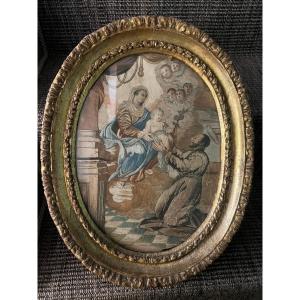









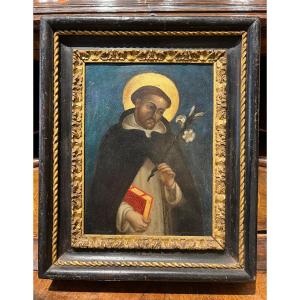
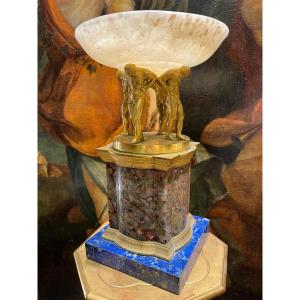

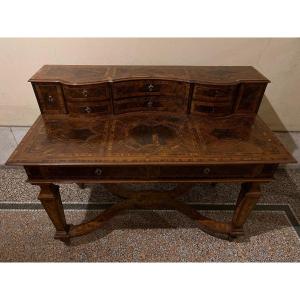








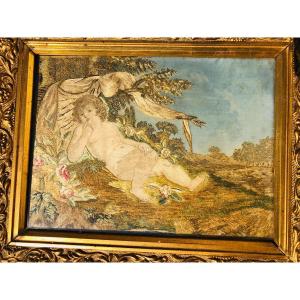



 Le Magazine de PROANTIC
Le Magazine de PROANTIC TRÉSORS Magazine
TRÉSORS Magazine Rivista Artiquariato
Rivista Artiquariato